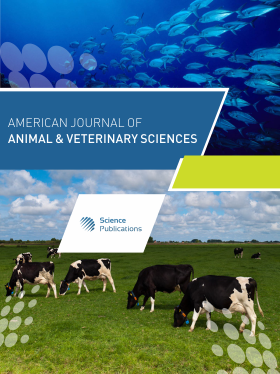Influence of Various Schemes of Feeding Calves with Whole Milk on their Growth Indicators and Physiological State
- 1 Scientific Research Institute of Agro-Innovation and Biotechnology, Toraigyrov University, Pavlodar, Kazakhstan
- 2 Toraigyrov University, Pavlodar, Kazakhstan
- 3 Moscow State Academy of Veterinary Medicine and Biotechnology - MVA named after K.I. Skryabin, Moscow, Russia
- 4 Vavilov Institute of General Genetics, Russian Academy of Sciences, Moscow, Russia
Abstract
In dairy farming, special requirements are imposed on the feeding of replacement young animals. The period when young animals receive colostrum and milk is considered important for raising viable and productive animals. During this time, a large amount of whole milk is consumed by calves. In this connection, the purpose of our study was to compare the effect of various schemes of feeding calves with whole milk on their growth indicators and physiological state. The study was conducted in the Pobeda Limited Liability Partnership (Pavlodar region, Republic of Kazakhstan). The objects of the study were heifers of the Simmental breed. During the experiment, the authors evaluated the effect of the commercial (375 L) and reduced (345 and 285 L) whole milk feeding schemes on the subsequent growth and development of calves. In just 150 days of the experimental period, the highest average weight, as well as the largest absolute and average daily gains were noted in animals that received the least amount of milk according to the feeding scheme, which became possible due to the early and more intensive consumption of compound feed by calves of these groups. In total, in the group that received 375 L of milk, each calf received 160.97 kg of starter compound feed, in the group with 345 L of milk 176.45 kg of compound feed, and the group with 285 L of milk 215 kg of compound feed. Thus, with the same nutritional value of the diets, a decrease in the amount of whole milk fed to the calves of the experimental groups led to an increase in their consumption of compound feed, which, against the background of a normal physiological state and the absence of significant differences in the growth dynamics of experimental animals, makes it economically feasible to approach the use of such expensive feed as whole milk.
DOI: https://doi.org/10.3844/ajavsp.2023.210.216

- 1,848 Views
- 1,394 Downloads
- 0 Citations
Download
Keywords
- Simmental Breed
- Milk Feeding Schemes
- Compound Feed
- Growth Dynamics
